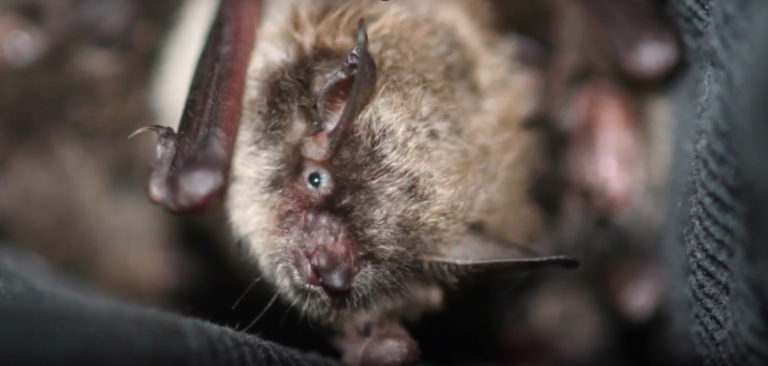
Hi everyone! I hope you all had a good week. I had another restful one. I just love being able to sleep and relax during the summer. I read an article about bats in Wyoming. It was a sad article because it was about White Nose Syndrome, but the information in it was very important and I thought it should be shared. Many bat species that used to thrive are now listed as federally threatened. Our very own little Lucy, the Little Brown bat, which used to be the most common bat species in the United States, is facing a 90-95% mortality because of White Nose Syndrome. The Northern long-eared bat is threatened, and the Tricolored bat is about to be listed as endangered. And, if that wasn’t sad enough, the fungus that causes White Nose Syndrome was found on a bat in Wyoming earlier this year. Once a bat is found to be carrying the fungus, it takes two to three years for White Nose Syndrome to appear and wipe out entire colonies. And, since colonies in the west are much smaller than the ones in the east, the bats in an infected colony have an even smaller chance of survival. When a bat becomes infected with the fungus that causes White Nose Syndrome, they become agitated. The fungus makes them itch, which wakes them from their hibernation slumber. This eats up the fat reserves that the bats had stored up when it was warmer out and there were lots of bugs flying around. Usually when a bat is hibernating, it only wakes up a few times. It flies to a new place in the cave, or it licks dew drops that have collected on its fur and goes back to sleep. If the bat has White Nose Syndrome, […]
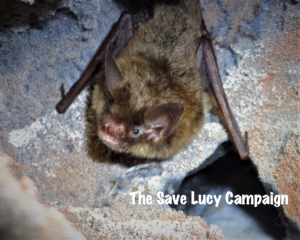
Hi everyone! I hope you all had a good week. It was nice and relaxing. I wish it could be summer all year long! I found an article about the Northern Long-eared Bats in Wyoming. These bats are on the endangered species list and need all they help that they can get from bigger creatures like us. A group of bat researchers from the University of Wyoming drove out to the Black Hills in order to study these bats. This can be very difficult because bats are agile flyers and don’t like to be caught in nets. The bats aren’t hurt and are released as soon as they are fitted with transmitters. This study was important because the researchers are looking at where the bats live, and if any of them has come into contact with the fungus that causes White Nose Syndrome. In addition to the Northern Long-eared Bats they were there to study, researchers also found Western Small-footed, Little Brown, Big Brown, Hoary bats. One of the bats they found was a mother Northern Long-eared Bat. Luckily, White Nose Syndrome hasn’t been found in the area’s Northern Long-eared Bats, but it has been spotted less than 200 miles away in Fort Laramie, and Jewel Cave National Monument in South Dakota which is only 65 miles away. The researchers needed to study these bats because there is a logging team nearby. They were worried because the loggers are chopping down ponderosa pine trees, which are very important to the area’s Northern Long-eared Bats because they are used for maternity roosts. In order to make sure that the loggers don’t cut down any trees being used by the bats, researchers capture the mothers, glue trackers on their backs, and follow them back to their homes. The researchers were happy to […]
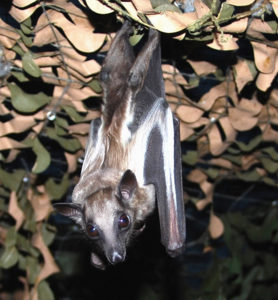
Hi everyone! I hope you all had a good week! Since Shark Week is starting Sunday, instead of the wonderful Bat Week, I thought that I should have this week’s blog also be slightly sharky. Even though they aren’t bats, sharks are very important to us and do need help. Since Shark Week does raise awareness about how important they are, I decided that this year, I won’t be quite so hard on them. After all, they can’t help it that they aren’t lovely little bats. I did a little bit of research and discovered that there is a beach in South Africa called Gansbaai. This beautiful beach has been nicknamed Shark Ally because there are so many sharks in the water there. In honor of the sharks that swim around that beach, I decided to write this blog about a bat from South Africa. I found an adorable fruit bat called the Straw-colored Fruit bat. The Straw-colored Fruit bat, like its name suggests, has straw colored fur. They also have olive or brown fur mixed in with the straw colored fur. They have big eyes, big ears, and pointy heads that help them reach fruit. These bats, along with other fruit bats, have cheek pouches. They use the cheek pouches to stash fruit in. They like to do this, then fly away with their yummy fruit. They do this so that other bats can’t get to their tasty meal. Straw-colored fruit bats eat a lot of fruit, their favorites seem to be mangoes, dates, figs, baobab flowers (which bats are drawn to because they are very stinky), passion fruit, and avocados. Apparently, these bats are very vocal eaters, and like to scream about their food finds to their friends. They smack their lips while they eat, which I find […]
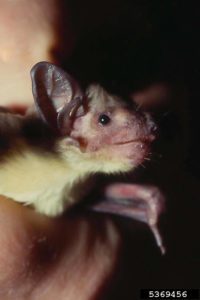
Hi everyone! I hope you all had a good week. I have had another nice and relaxing one. As I was looking for batty news, I stumbled upon a really interesting article. A research team in Kenya was studying African Yellow House Bats. There are 21 known species of African Yellow House Bats and the scientists were trying to accurately classify all the species when they made an amazing discovery. They believe they have discovered two new species of these bats! House Bats get their name from the fact that they like to roost in urban environments, but they are still very difficult to catch and study. Scientists knew there were different kinds because, while most of them have distinctive yellow bellies, some have brown or orange ones. Other than that, their physical differences are difficult to distinguish. Using skin samples, scientists analyzed the DNA of 100 bats in Kenya. They compared the samples to the bats in their genetic database and developed an African House Bat family tree. The new family tree helped organize the bats and showed that there are two distinct genetic lineages. Even though it is almost certain that these two bat species are new, researchers still have to show that they exhibit unique features, both physically and behaviorally, before they can officially be classified as new species. If you would like to read more about this exciting news, you can find information here. I hope everyone has a good week. Happy Bastille Day to everyone in France!
Hi everyone! I hope you all had a good week and that you enjoyed your 4th of July celebrations. I heard about a soccer team that has been stuck in a cave in Thailand. A lot of people are working very hard to get them out of the cave safely. It must be a very difficult job. I thought it would be nice to learn about a bat from Thailand. I found an adorable bat called the Greater False Vampire bat. They live throughout South Asia, including Thailand. They roost in places that a lot of other bat species also roost in such as caves, hollow trees, and old buildings. These very cute bats have big ears and an incredibly handsome nose-leaf that covers most of their face. The Greater False Vampire bat has blue-grey fur covering most of their body, and a brown-grey stomach. These bats are carnivores who like to eat many yummy things including fish and larger insects that smaller bats aren’t big enough to eat. Unlike other carnivorous bats, these bats will sometimes sit and wait for their prey to come by. Once they catch their tasty morsel, they fly to a nice safe place to eat it. If you want to read more about the Greater False Vampire bat, you can read about them here. I would like to wish all the rescuers in Thailand the best of luck. I hope everyone gets out of the cave safely soon.
Hi everyone! I hope you all had a good week! I am enjoying my summer vacation. I have been sleeping late and relaxing. I’m sure you all remember the hurricanes that hit the Caribbean last year. Hurricanes Irma and Maria did a lot of damage. It has been easy to forget about the hurricanes in the 9 months that have passed, but people living there have been unable to forget. Over 14,000 people in Puerto Rico are still without power. People are still rebuilding their homes. Not only has been difficult for people living there, but it has also been difficult for the animals. Luckily, they are starting to recover. I have some good news about the bats in the US Virgin Islands. Some bat species recovered from the hurricanes relatively quickly. The Pallas Mastiff Bat is one of those species. They feed mainly on insects, so they were able to continue to find food. Fruit bats were not so lucky. The hurricanes took down the trees on the islands destroying the food source for the fruit bats. Renanta Platenberg, a researcher at the University of the Virgin Islands has been studying the bats on the islands for many years. After the hurricanes hit, she and her team went out in search of bats to see how they were doing. It was months before they were able to find any bats. Instead, they saw birds dying of hunger. Then they found out that bats were dying on St. Croix. The hurricanes had destroyed the food source for the three fruit bat species on the island. Ms. Platenberg came up with what I believe was an ingenious way to help the bats. She went on social media and asked people to put bananas and other fruit out for the bats. Thanks […]
Hi everyone! I hope you all had a good week. The world got some sad news Thursday when we learned of the passing of Koko the Gorilla. Koko was an amazing gorilla who had learned to communicate in American Sign Language. She was able to tell the world how she was feeling and what she was thinking in ways that humans didn’t realize animals would be able to. She was a great ambassador of the animal kingdom and will be greatly missed. I would like to express my sympathy to her caretakers and friends, especially Ms. Penny Patterson, who was Koko’s friend, teacher, and caretaker throughout Koko’s life. And I would like to dedicate this week’s blog to the memory of Koko. Since Koko lived in California, I thought it would be nice to learn about a California bat this week. Yuma myotis is just one of the adorable little critters that I read about. Not only does the Yuma myotis live in California, but it also lives in other parts of Western North America from British Columbia all the way down to Central Mexico. They live as far east as Oklahoma. They are covered by short brown fur and have little white tuffs on their stomachs. They always roost near a body of water, and like to rest in caves, attics, mines, and underneath bridges. They live in forests and desert areas with access to rivers, streams, ponds, or lakes. Like most other North American bats, these adorable animals like to munch on insects. Their favorites are moths, midges, caddisflies, craneflies, and beetles. If you would like to read more about the Yuma Myotis, you can find information here.
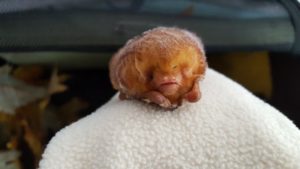
Hi everyone! I hope you all had a good week! I am very excited because yesterday was the last day of school! I am finally free! Free to sleep late and relax! While I was looking for batty news, I came across an article about a small Dutch town that is helping bats. Zuidhoek-Nieuwkoop is becoming a very eco-friendly town in the Netherlands. It is called home by a variety of rare and vulnerable plants and animals. Most importantly, they are home to a few bat species, including some in need of help. As we all know, bats, and other nocturnal animals, don’t like bright lights. Bright streetlights hurt their eyes and cause all kinds of problems for them. Zuidhoek-Nieuwkoop has found a pretty cool solution to the problem. Red lights! Signify is an organization that has taken regular streetlights and changed them so that they emit a red color that uses a wavelength that doesn’t hurt the bats’ eyes, so they are able to fly around and do all their batty things. Not only does this light help nocturnal animals, it also helps the environment. The new lights save energy, which helps reduce the town’s carbon footprint. The streetlights have LED lights that are hooked up to a remote that can change the brightness of the light if needed. I’d like to thank the people of Zuidhoek-Nieuwkoop for helping bats and other nocturnal animals. I’d also like to thank them for everything else they do to help the environment. Back in 2011, this town built 89 new sustainable houses that are better for the environment. These new streetlights couple perfectly with them in helping the animals and plants living, and thriving, around them. If you want to read the article you can find it here. I hope everyone has […]
Hi everyone! I hope you all had a good week! I had an eventful one. My sister graduated from high school on Thursday! In honor of her graduating, I thought I would write about one of her favorite bats. She loves the little Bumble-Bee Bat. The Bumble-Bee Bat is not only one of the cutest animals I have ever seen, it is also the smallest mammal known to man. This makes it the smallest bat species. The official name of the Bumble-Bee Bat is the Kittie’s Hog-Nosed Bat, but since it’s only an inch long, people nicknamed it the Bumble-Bee Bat. This bat has red or gray fur, big ears, a cute tail, extra webbing between its hind legs, and true to its name, a cute hog-ish nose. The extra webbing between their legs helps them move around while they are flying. The Bumble-Bee Bat lives along the Southeast part of Burma, the western areas of Thailand, and the Sai Yok National Park in Thailand. They roost along the forest areas and the limestone caves by rivers. Their diet consists of insects that live near the water. They eat a lot of flies and also eat spiders. Unlike a lot of other bat species, these bats don’t live in large colonies. Their colonies usually only have between 100 and 500 members, sometimes even less. Some colonies only have 10 bats as members. If you’d like to read more about these adorable bats, you can find information here.




